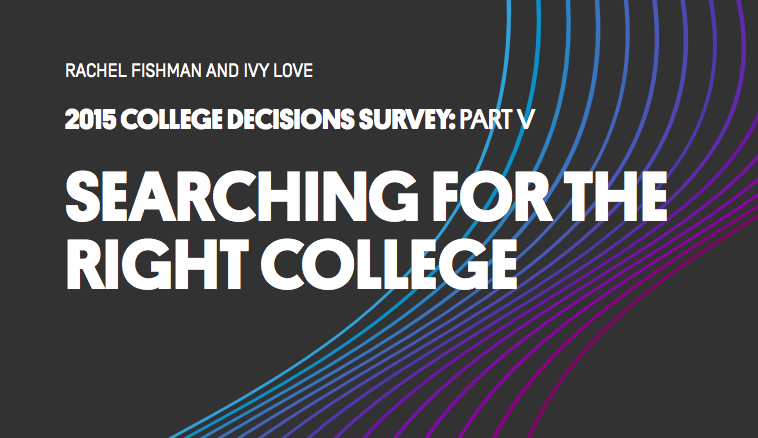 Students on today’s college campuses can vary greatly in age, ethnicity, race, socioeconomic status and enrollment type. Students with diverse interests and backgrounds have diverse needs, as well. So how do students go about finding the right college that is the right fit for them personally?
Students on today’s college campuses can vary greatly in age, ethnicity, race, socioeconomic status and enrollment type. Students with diverse interests and backgrounds have diverse needs, as well. So how do students go about finding the right college that is the right fit for them personally?
A report released by New America’s Education Policy Program analyzed prospective students’ college search behaviors, where they get their information and whether they find it helpful.
Students surveyed used a variety of sources to learn about colleges, including college ranking lists, campus visits, personal connections, and —the most popular— college websites and online search engines. Although most students who browsed college websites found them helpful, many reported problems such as difficulty finding information on college costs and financial aid). Although fewer students participated in campus visits or used the U.S. Department of Education website, those that did found them very helpful. Unfortunately, students from low and moderate-income households were the least likely to visit college campuses. Such students were also less likely than their wealthier peers to consult personal connections, likely because their family and social circles may not be knowledgeable about the college selection process.
Conversely, 75% of students surveyed said they were able to find all the information they needed, yet 63% felt lost while searching colleges.
“Students have to locate and weigh an enormous amount of information to select an institution and program that fits their needs.” Rachel Fishman, senior policy analyst for New America and one of the report’s authors explained the contradiction. “It is not surprising that 63 percent of recently-enrolled and prospective students say they have often felt lost when researching college or financial aid options.”
More needs to be done to provide clarity and guide students to quality information they can use. With students left to filter through an overwhelming amount of information, the survey proposes measures the federal government and institutions can take to simplify and improve the college selection and search process so that all students have better access to finding the right college for them.
The report recommends that the federal government should:
• Provide students with more transparent data that is relevant to them by enhancing the data search tools available to them. The New College Scorecard is an exemplar of this by offering wage, graduation, and cost data.
• Simplify the financial aid structure so students can better understand how financial aid and student loans are structured.
• Ensure all students have a fair chance of graduating and paying off their debts, by holding institutions accountable for poor performance.
The report recommends that higher education institutions should:
• Work to improve their Search Engine Optimization (SEO) rating to better guide students to their websites. Lead generators (which often have high SEO rankings) often mislead students by providing inaccurate rankings and information.
• Find ways to make college visits more affordable, particularly for students from low-income families.
• Increase student trust by providing accurate information on college costs, financial aid and scholarships.
The report is the last and final report of a series released throughout the summer and fall called the 2015 College Decisions Survey, which studied how all prospective students (regardless of age at the time of enrollment) engage with the degree-seeking and financing process.
